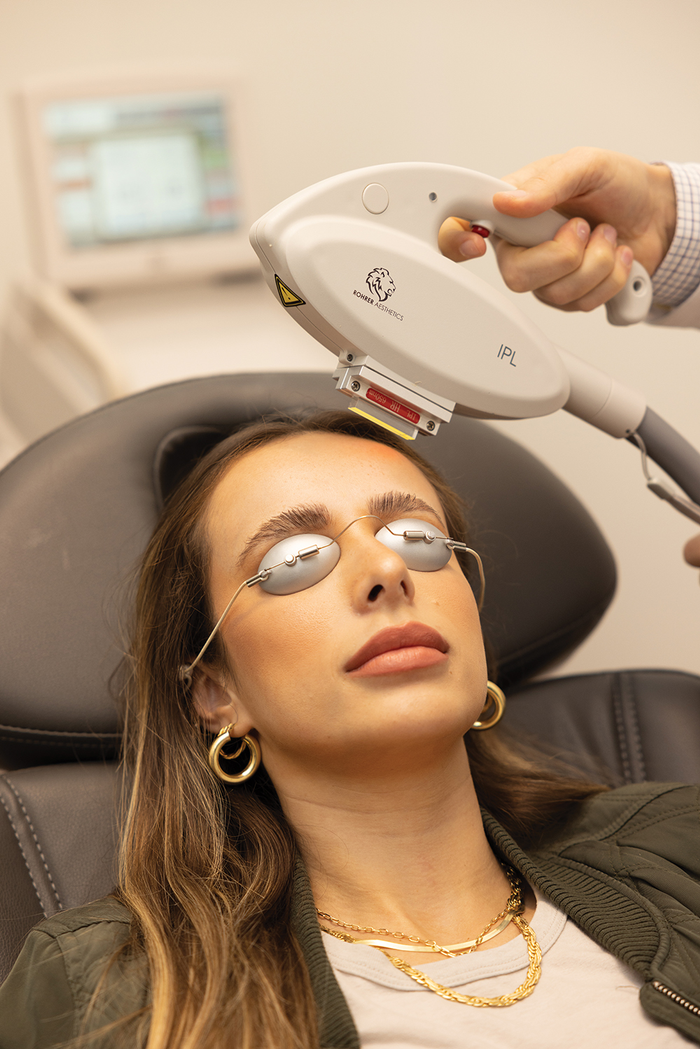When thinking about health and well-being, one’s skin is often a bit of an afterthought. Much attention is paid to organs such as the heart, keeping muscles and bones strong and optimizing brain function as we age. Although we see our skin every day, we don’t often stop to recognize its vital role in our overall health. There is no better time than the beginning of a new year to give your skin the attention it absolutely deserves.
The aging process can take a visible toll on the skin. As years pass and wrinkles set in, we may tend to take notice of our skin and actively attempt to reverse the aging process. Skin sagging, dark spots, wrinkles and more are natural but typically aren’t something we wish to see reflected in the mirror each day. While there is no fountain of youth, there are many skincare products, treatments and cosmetic procedures that can help reverse the clock, at least for a while.
Where should you start when forming a good skincare routine for healthy skin at any age? Most dermatologists and skincare experts recommend beginning with a gentle cleanser followed by the application of moisturizer and sunscreen daily to help protect the skin from the sun’s damaging rays. It also may be beneficial to employ an antioxidant, which can prevent damage from free radicals like pollution and the sun’s UVA/UVB rays. Antioxidants work to increase collagen production and keep cell membranes in the skin more stable. Popular antioxidants such as vitamin C and retinol (a derivative of vitamin A) can be found in many over-the-counter skin creams.
It’s hard to believe, but there was a time when sun-kissed skin was the standard, and tanning at the beach or by the pool was promoted by the beauty industry. It wasn’t until the 1970s and ‘80s that scientists began to understand the harmful effects of the sun’s ultraviolet rays on the skin. Known as photoaging, the damage occurs when the rays reach the deepest layers of the skin and impact its fibers, causing them to break down, resulting in loss of elasticity as well as visible dark spots. It can take years before the damage can be seen on the skin’s surface, which is why proper sun protection is essential even among children.
“Given the intensity of the Texas sun, sun-protective measures are essential. I recommend daily use of a mineral sunscreen with a minimum SPF (sun protection factor) of 30,” says Dr. Amanda Champlain, a dermatologist with Dermatology Consultants of Frisco. She also suggests wearing a wide-brimmed hat, sunglasses and sun-protective clothing with UPF (ultraviolet protective factor) as a practical method of protection, especially during the summer months. “My best piece of advice for maintaining youthful skin is to protect it from the effects of the sun. Other efforts to appear youthful cannot compensate for the discoloration, wrinkles and textural changes that occur in the skin as a result of sun damage,” she says.
Dr. Jordan Cain, a facial plastic surgeon with Texas Facial Aesthetics in Frisco, concurs. “The number one factor that contributes to the appearance of aging skin is sun damage,” he says. If you’ve not been a regular sunscreen user, he says it’s never too late to get on track and prevent further damage. “Use sunscreen daily on the face. Even when it is cloudy outside, driving in the car or walking into work or the store, we’re susceptible to damaging UVA and UVB rays.”

When it comes to combating the appearance of deep lines, which are a natural part of aging, Dr. Ken Smart, a plastic surgeon with Frisco Plastic Surgery & MedSpa, says fillers may help. Best known by the brand names Juvéderm and Restylane, fillers are injectable gels that, when placed just below the surface of the skin, can add volume to areas where natural fat and proteins have been lost due to aging. The main ingredient in most fillers is hyaluronic acid, which is found naturally in the body. Many people choose fillers to help soften smile lines, restore lost volume or augment lips and cheeks.
“Fillers are extremely popular in the younger age groups for augmenting facial features such as the lips, cheeks and jawline. In more mature patients, they are also used for this, but more importantly to restore volume that is lost over time,” Smart says, explaining that the visible effects of fillers can last anywhere from six months to two years. Injections can be performed in a provider’s office with little to no downtime.
Another anti-aging aesthetic treatment – and what is considered the gold standard for reducing the appearance of wrinkles – is Botox. The injections are among the most common cosmetic procedures performed today and typically are used to soften fine lines on the forehead and around the eyes.
According to the American Society of Plastic Surgeons, more than 4.4 million Botox procedures were performed in 2020. Botox, a toxin made from a bacterium called Clostridium botulinum, is a well-known brand. There are other brands of neuromodulators, including Dysport and Xeomin, that work by relaxing muscles to prevent the release of acetylcholine, a neurotransmitter. Without acetylcholine, muscles cannot function. Botox and similar products smooth wrinkles away by temporarily paralyzing the facial muscles. The injections typically take seconds to administer and produce results relatively quickly.
“The advances in injectable treatments such as neuromodulators for wrinkle reduction or facial fillers have been the biggest changes in skin care over the last 20 years,” explains Dr. Matthew Richardson, a facial plastic surgeon also with Texas Facial Aesthetics in Frisco. “The widespread use of injectable facial cosmetic procedures has changed what we can do in the world of facial aesthetics. We have products that are safer, last longer and look more natural than ever before.”
Looking good as we age also depends on how we treat our bodies, namely by adopting healthy routines. Proper nutrition, regular exercise and staying adequately hydrated are key. “Having a healthy lifestyle definitely matters,” Champlain says. While external factors such as sun exposure and pollution contribute to the skin’s appearance, one’s diet also plays an important role. “Because nutritional deficiencies can manifest as skin diseases, I recommend a well-balanced, plant-based diet with plenty of healthy fats and the daily consumption of dark, leafy greens.”
Plastic surgery remains an option for those who desire significant, long-term changes to their skin’s appearance. “When considering surgical treatments for facial aging,” Cain says the best step one can take is to "discuss all of the available options with someone like a facial plastic surgeon who has expertise in both surgical and non-surgical rejuvenation of the face.”
Did you enjoy this article? Leave us a review on Google here or tell us by sending an email to info@friscostyle.com!






